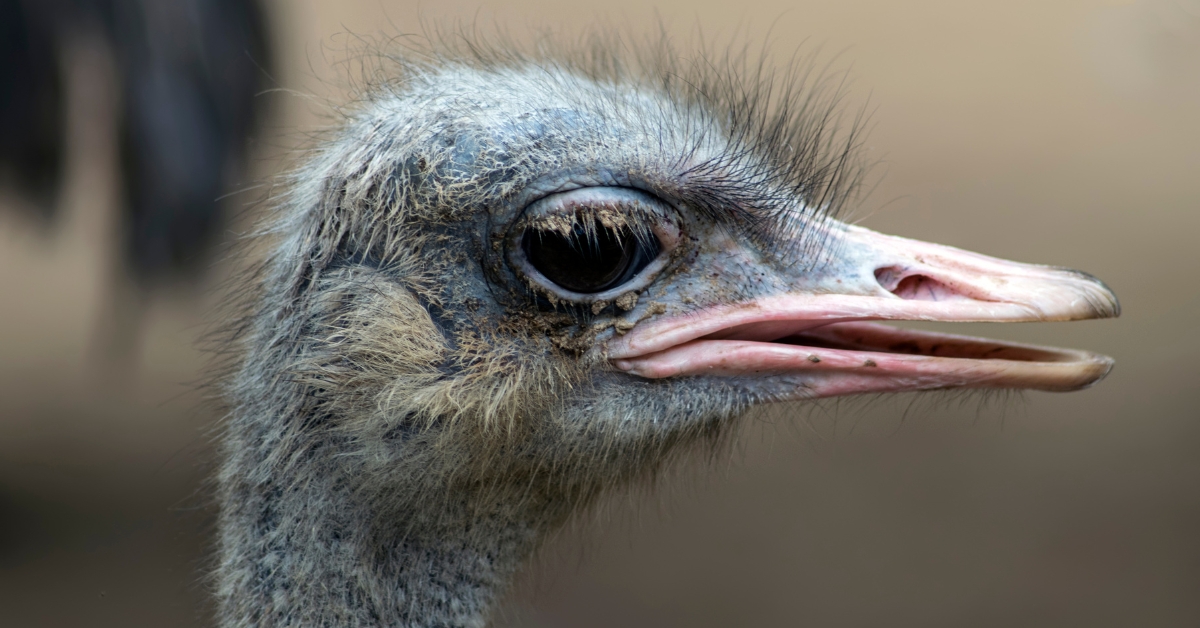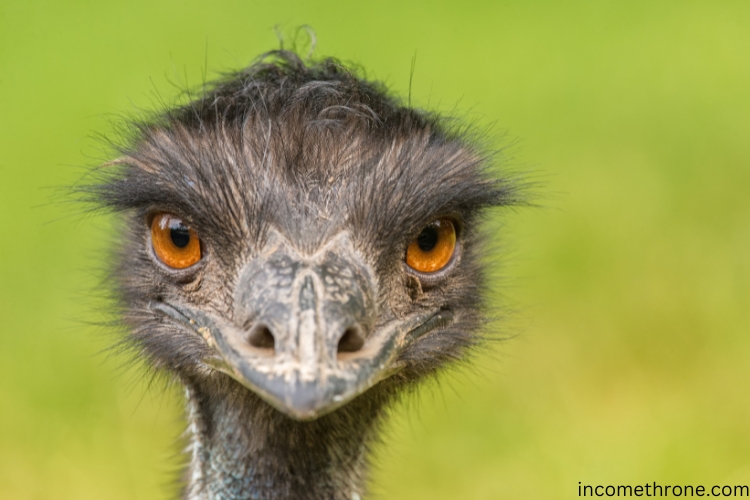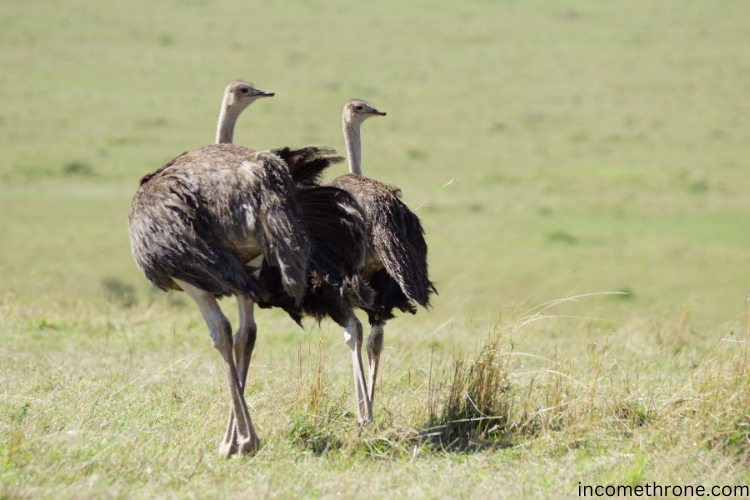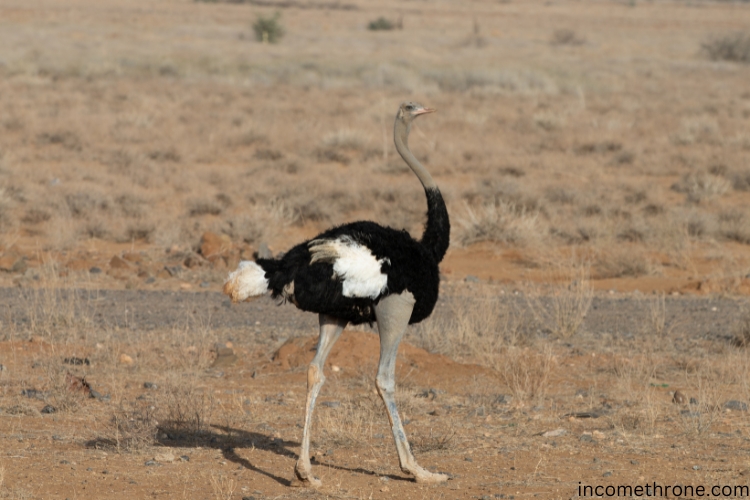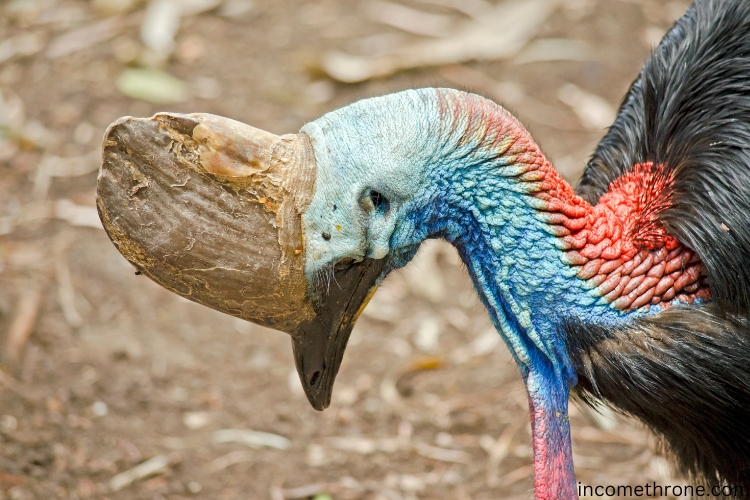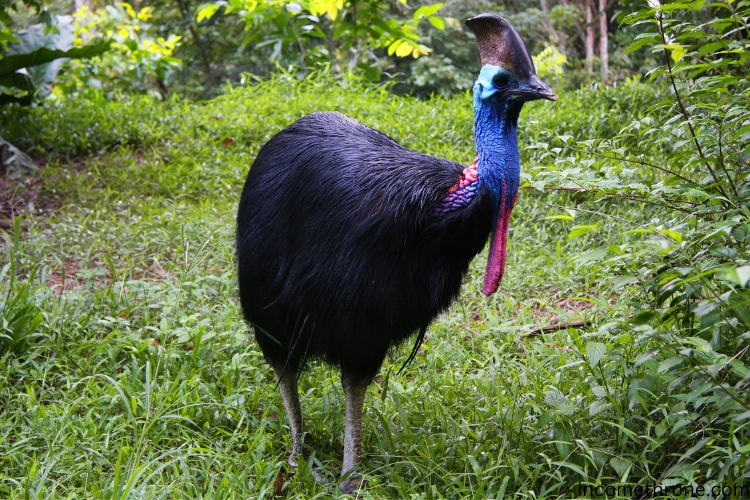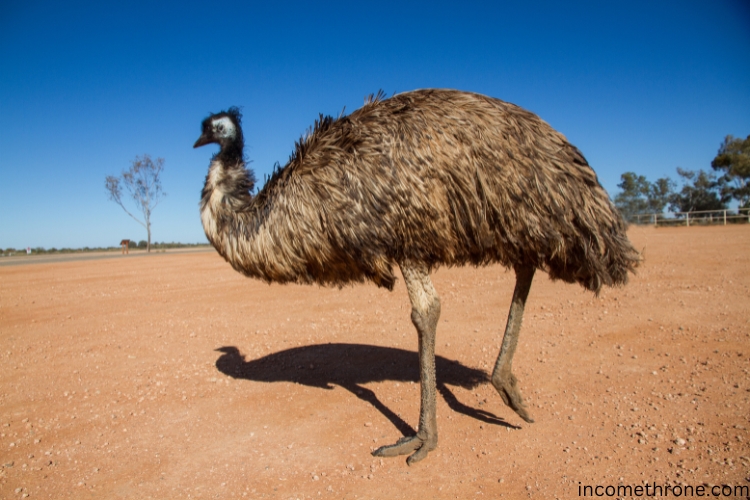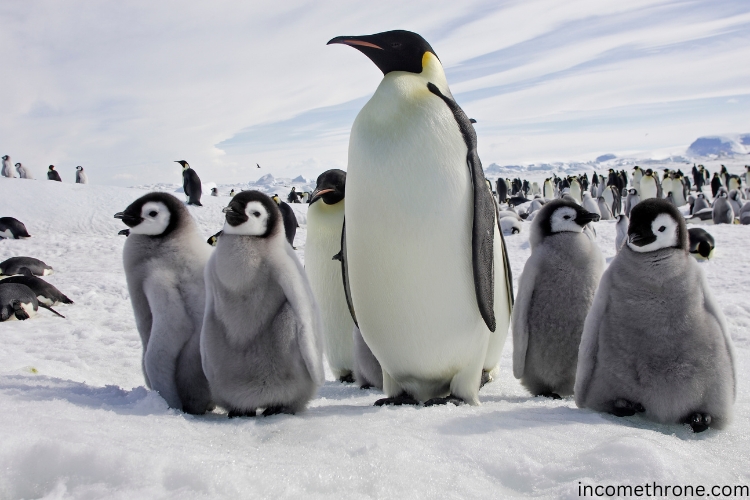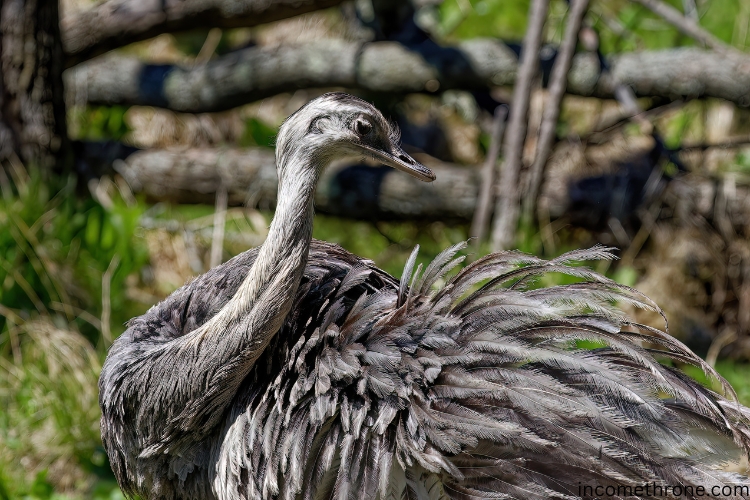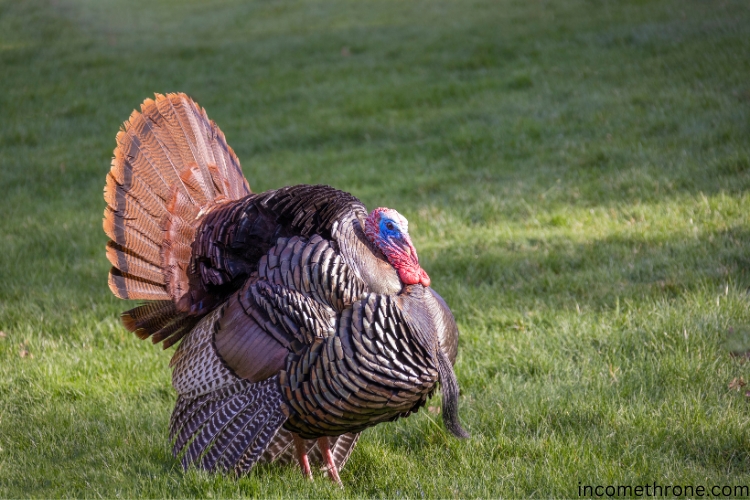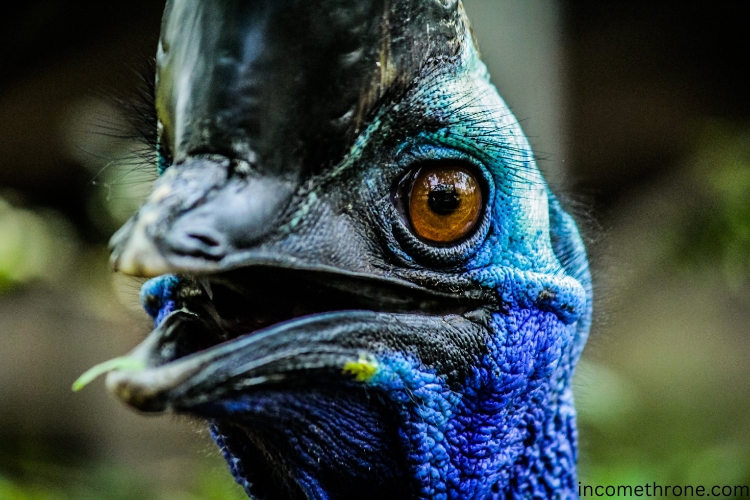Prepare to be awed by the sheer size and majesty of the world’s largest bird species. From the towering common ostrich to the enigmatic cassowaries of the tropics, these avian giants represent a living link to the prehistoric past and the evolutionary forces that have shaped the natural world.
Join us as we explore about the remarkable adaptations and conservation challenges faced by these truly remarkable creatures, whose very existence inspires wonder and awe in all who encounter them.
Key Takeaways
| Takeaway | Description |
|---|---|
| Prehistoric Avian Giants | Birds used to be even bigger, with species like the Gastornis and Titanis walleri dwarfing even the largest modern birds. |
| Factors Behind Avian Gigantism | Flightlessness, size advantages for survival and reproduction, and environmental influences have all contributed to the development of massive bird species. |
| The 9 Biggest Bird Breeds | The common ostrich, Somali ostrich, southern cassowary, northern cassowary, emu, emperor penguin, greater rhea, domestic turkey, and dwarf cassowary are the largest bird species alive today. |
| Adaptations for Massive Size | Flightless frames, efficient digestive systems, and effective thermoregulation strategies enable these avian giants to thrive. |
| Conservation Challenges | Habitat loss, hunting, and climate change threaten the survival of many of the world’s largest bird species, requiring concerted conservation efforts. |
| Appreciating the Avian Behemoths | These towering titans of the avian world capture our imagination and inspire awe, underscoring the incredible diversity and resilience of life on our planet. |
Birds Used to Be Even Bigger
While the birds we know and love today are already impressive in size, the prehistoric past was home to some truly gargantuan avian species. Millions of years ago, the skies were ruled by massive “terror birds” and other megafauna that dwarfed even the largest birds alive today.
The Gastornis, for example, stood up to 6.5 feet (2 meters) tall and weighed over 300 pounds (140 kg). These flightless predators stalked the Paleocene and Eocene landscapes of Europe and North America, preying on small mammals and other early ancestors of modern animals.
Similarly, the Titanis walleri, a relative of today’s seriemas, grew to an astounding 9 feet (2.7 m) in height and could weigh over 300 pounds (140 kg). These fearsome carnivores were among the last of the giant terror birds, going extinct around 2 million years ago.
While we may be grateful these prehistoric avian giants are long gone, their existence underscores just how massive and diverse the bird kingdom can be. Today’s largest species, though still impressive, pale in comparison to their ancient predecessors.
Understanding the Factors Behind Big Bird Sizes
So what enables some birds to grow to such colossal proportions? There are a few key factors at play:
1. Flightlessness Allows for Larger Size
One of the primary drivers of gigantism in birds is the loss of flight. Flightless species, like ostriches, cassowaries, and emus, are able to allocate more of their energy and resources into building massive, muscular frames without the constraints of powered flight.
Without the need for lightweight, streamlined bodies optimized for flight, these birds can develop thicker bones, bigger organs, and bulkier musculature – all of which contribute to their towering statures.
2. Size Advantages for Survival and Reproduction
Larger size also confers significant benefits for the survival and reproductive success of these avian giants. Bigger birds are less vulnerable to predation, can better compete for mates and resources, and are often more successful at defending their nests and young.
Additionally, the immense size of these species allows them to consume a wider variety of food sources, from small vertebrates to tough plant matter that smaller birds cannot easily access.
3. Environmental Influences
The specific environments and habitats occupied by different bird species also play a role in determining their maximum sizes. Factors like climate, available resources, and the presence of competing predators can all influence the evolutionary trajectories that lead to gigantism.
For example, the massive Andean condor of South America likely developed its impressive 10-foot (3 m) wingspan to help it soar effortlessly over the high-altitude Andes mountains, taking advantage of the abundant thermals and updrafts.
The 9 Biggest Bird Breeds Today
Now that we’ve explored the factors behind avian gigantism, let’s take a closer look at the 9 biggest bird breeds alive today:
| Rank | Species | Average Weight (lbs) |
|---|---|---|
| 1 | Common Ostrich (Struthio camelus) | 344 |
| 2 | Somali Ostrich (Struthio molybdophanes) | 287 |
| 3 | Southern Cassowary (Casuarius casuarius) | 187 |
| 4 | Northern Cassowary (Casuarius unappendiculatus) | 165 |
| 5 | Emu (Dromaius novaehollandiae) | 154 |
| 6 | Emperor Penguin (Aptenodytes forsteri) | 101 |
| 7 | Greater Rhea (Rhea americana) | 88 |
| 8 | Domestic Turkey (Meleagris gallopavo) | 86 |
| 9 | Dwarf Cassowary (Casuarius bennetti) | 75 |
1. Common Ostrich (Struthio camelus)
As the largest living bird species, the common ostrich is an absolute marvel of nature. Standing up to 9 feet (2.7 m) tall and weighing up to 344 pounds (156 kg), these flightless giants are native to the savannas and grasslands of Africa.
Ostriches are known for their powerful legs, which allow them to run at speeds of up to 43 mph (70 km/h) – the fastest land speed of any bird. Their massive size also makes them formidable in a fight, with the ability to deliver devastating kicks that can easily disembowel a predator.
2. Somali Ostrich (Struthio molybdophanes)
A close relative of the common ostrich, the Somali ostrich is only slightly smaller, standing up to 8.9 feet (2.7 m) tall and weighing up to 287 pounds (130 kg). These birds are found in the Horn of Africa, primarily in Somalia, Ethiopia, and Kenya.
Somali ostriches are distinguished by their distinctive blue-gray plumage and reddish-pink necks and legs. They are equally impressive runners, capable of reaching speeds over 40 mph (64 km/h).
3. Southern Cassowary (Casuarius casuarius)
The third-largest bird in the world, the southern cassowary is a truly remarkable creature. Standing up to 6.2 feet (1.9 m) tall and weighing up to 187 pounds (85 kg), these flightless birds are native to the tropical rainforests of northeastern Australia and surrounding islands.
Cassowaries are perhaps best known for their distinctive casque, a bony, horn-like structure that adorns the top of their heads. This unique feature is thought to serve a variety of functions, from visual displays to aiding in navigation through dense vegetation.
4. Northern Cassowary (Casuarius unappendiculatus)
Closely related to the southern cassowary, the northern cassowary is only slightly smaller, standing up to 5.9 feet (1.8 m) tall and weighing up to 165 pounds (75 kg). These birds are found in the tropical forests of western New Guinea and surrounding islands.
Like their southern counterparts, northern cassowaries are equipped with powerful legs and sharp, dagger-like claws that can inflict serious injury. They are considered one of the most dangerous birds in the world, with a well-deserved reputation for aggression when threatened.
5. Emu (Dromaius novaehollandiae)
The emu is the second-largest living bird species, standing up to 6.6 feet (2 m) tall and weighing up to 154 pounds (70 kg). These flightless birds are native to the Australian mainland, where they roam the open woodlands, grasslands, and savannas.
Emus are known for their distinctive gray-brown plumage, long necks, and powerful legs that allow them to reach speeds of up to 31 mph (50 km/h). They are also remarkable swimmers, capable of crossing wide rivers and estuaries with ease.
6. Emperor Penguin (Aptenodytes forsteri)
While not a member of the ratite family like the other birds on this list, the emperor penguin is the largest living penguin species. Standing up to 4.2 feet (1.3 m) tall and weighing up to 101 pounds (46 kg), these remarkable seabirds are found in the harsh, frozen environments of Antarctica.
Emperor penguins are renowned for their remarkable adaptations to the extreme cold, including a specialized circulatory system that helps them maintain a warm, stable body temperature. They are also skilled divers, able to hold their breath for up to 22 minutes while hunting for fish, squid, and crustaceans.
7. Greater Rhea (Rhea americana)
The greater rhea is the largest bird native to the Americas, standing up to 5.6 feet (1.7 m) tall and weighing up to 88 pounds (40 kg). These flightless birds are found in the grasslands, savannas, and pampas of South America, particularly in Argentina, Brazil, and Paraguay.
Greater rheas are known for their distinctive gray plumage, long necks, and powerful legs that allow them to run at speeds of up to 35 mph (56 km/h). They are also skilled swimmers, capable of crossing rivers and lakes with ease.
8. Domestic Turkey (Meleagris gallopavo)
While not a wild species, the domestic turkey is still considered one of the largest bird breeds in the world. Standing up to 3.3 feet (1 m) tall and weighing up to 86 pounds (39 kg), these birds were domesticated from the wild turkey native to North America.
Domestic turkeys, often associated with Thanksgiving celebrations, have been selectively bred for their large size and meat production. However, they have lost much of the agility and endurance of their wild counterparts, and are generally less capable of sustained flight or long-distance running.
9. Dwarf Cassowary (Casuarius bennetti)
Despite its name, the dwarf cassowary is still an impressive bird, standing up to 3.6 feet (1.1 m) tall and weighing up to 75 pounds (34 kg). These birds are found in the tropical forests of New Guinea and surrounding islands.
While the smallest of the cassowary species, the dwarf cassowary is no less formidable, with its distinctive casque, powerful legs, and sharp claws. They are known to be aggressive when threatened and should be approached with caution.
Adaptations that Enable Massive Size
The ability of these avian giants to reach such colossal proportions is the result of a remarkable suite of evolutionary adaptations. From their flightless builds to their efficient digestive systems, these birds have developed a range of strategies to support their towering statures.
1. Flightless Frames
The loss of flight is perhaps the most significant factor enabling the development of such massive sizes. Without the need to maintain a lightweight, streamlined body optimized for powered flight, these birds can allocate more resources to building larger, more robust skeletal structures and musculature.
Their thick, powerful legs and feet are particularly well-suited for supporting their immense weights, while their thick, muscular necks and broad, powerful wings (even if not used for flight) help to balance and stabilize their massive frames.
2. Efficient Digestive Systems
Feeding such large bodies requires an equally impressive digestive system, and the avian giants have evolved adaptations to maximize the efficiency of nutrient absorption and utilization.
Many of these species, such as ostriches and emus, have developed specialized gizzards – muscular chambers in the digestive tract that help to grind up tough plant matter and other fibrous foods. This allows them to extract more energy and nutrients from a wider range of food sources than smaller birds.
3. Thermoregulation Strategies
Maintaining a stable body temperature in the face of their enormous size is another challenge these birds have had to overcome. Many have developed adaptations like thick, insulating plumage, or effective heat-dissipation mechanisms like the ability to regulate blood flow to exposed areas like their necks and legs.
The emperor penguin, for example, has a sophisticated circulatory system that allows it to conserve heat in the extreme cold of the Antarctic, while the Andean condor utilizes its massive wingspan to catch thermal updrafts and soar effortlessly over the Andes mountains.
4. Conservation Challenges for the Giants
Despite their impressive size and adaptations, many of the world’s largest bird species face significant conservation challenges. Threats like habitat loss, hunting, and climate change have pushed some of these avian giants to the brink of extinction.
The southern cassowary, for instance, is classified as “Vulnerable” on the IUCN Red List, with its populations declining due to deforestation, road collisions, and hunting for its meat and feathers. Similarly, the Somali ostrich is considered “Endangered,” with less than 15,000 individuals remaining in the wild.
Even the mighty common ostrich, the largest living bird, is not immune to these threats. Habitat fragmentation, competition with livestock, and illegal poaching have all contributed to a steady decline in their numbers across Africa.
Concerted conservation efforts, including protected areas, anti-poaching patrols, and public education campaigns, are crucial to ensuring the long-term survival of these remarkable avian giants. By preserving their habitats and mitigating the pressures they face, we can help safeguard the future of the world’s biggest birds.
Appreciating the Awe-Inspiring Avian Behemoths
The towering titans of the avian world capture our imagination for good reason. These colossal birds, with their impressive sizes, unique adaptations, and often-charismatic behaviors, represent a living link to the prehistoric past and the evolutionary forces that have shaped the natural world.
From the majestic common ostrich striding across the African savannas to the enigmatic cassowaries of the New Guinea rainforests, these avian giants inspire awe and wonder in all who encounter them. They are a testament to the incredible diversity and resilience of life on our planet.
As we continue to explore and appreciate these remarkable creatures, we must also recognize our responsibility to protect them. By supporting conservation efforts and promoting sustainable ecotourism, we can ensure that these towering titans of the avian world continue to grace our skies and inspire future generations.
So the next time you catch a glimpse of one of these avian behemoths, take a moment to marvel at the wonders of the natural world and the incredible adaptations that have allowed these birds to thrive, even in the face of such enormous size.

